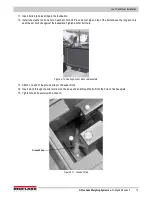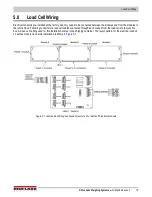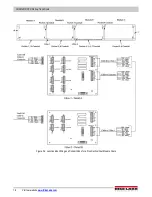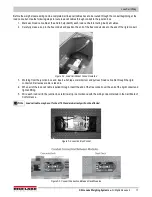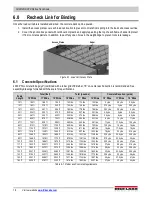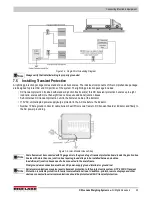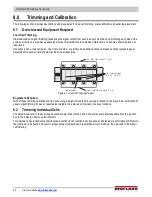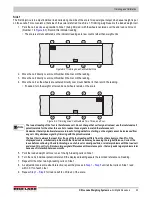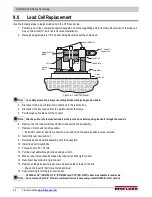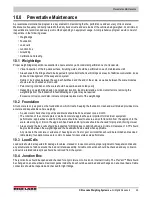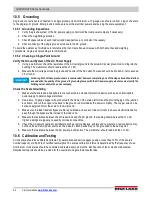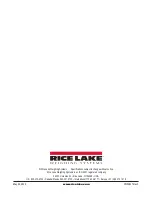
Trimming and Calibration
© Rice Lake Weighing Systems
●
All Rights Reserved
27
8.4 Calibration with Test Weights
The calibration procedure can only be done after all trimming as described in the previous page has been completed. A scale
technician with a test weight truck and the expertise to access the scale indicator’s setup or calibration mode must perform the
calibration procedure.
Figure 8-6. Calibration With Test Weights
Equipment Required
Truck scales are routinely calibrated using 25% of the capacity weight of the scale. Certified Class F test weights equaling at
least 12.5% of the scale’s capacity are required for calibrating a commercial legal-for-trade truck scale. In addition, some type of
weight for a substitution test of an additional 12.5% of the capacity is required. This can be the test-weight truck, bags of sand,
or any convenient items easy to load onto the scale. This total calibration weight of 25% of scale capacity (12.5% test weights,
12.5% substitution weight) is required by weights and measures officials for commercial truck scales in most states. Check with
weights and measures officials for the requirements in the local jurisdiction.
Industrial scales not used for legal-for-trade transactions do not require certified test weights. Weight equal to 25% of scale
capacity is recommended for calibrating such scales.
See NIST Handbook 44 for detailed calibration requirements and procedures.
8.5 Serial Tag
The serial tag on an OTR truck scale is found at the end of the scale near the SURVIVOR logo. A duplicate tag is placed inside
of the junction box pocket.
Figure 8-7. Serial Tag Placement
1
4
3
2
8
5
6
7

